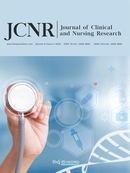A Discussion on the Constitution Factors of Thin Endometrium Based on the Theory of Qi and Blood
Abstract
Thin endometrium has been proven to be a key contributing factor leading to infertility and poor pregnancy outcomes. Increasing the thickness and capacity of thin endometrium seems to be one of the challenging issues in reproductive medicine. The states of qi and blood are closely related to uterine blood circulation. Constitution is regarded as an important basis for determining the incidence as well as distinguishing, preventing, and treating diseases in traditional Chinese medicine. Based on the theory of qi and blood, this paper discusses the constitution factors of thin endometrium and puts forward the prospect of using big data tools to investigate the correlation between qi-blood imbalance constitution and the incidence of thin endometrium, so as to explore new approaches for the prevention and treatment of thin endometrium by regulating qi and blood as well as improving the constitution condition.
References
Tong Y, Wang X, 2020, Chinese Expert Consensus on Diagnosis and Treatment of Abnormal Endometrium in Assisted Reproductive Technology. Journal of Practical Obstetrics and Gynecology, 36(04): 257–260.
Mouhayar Y, Franasiak JM, Sharara FI, 2019, Obstetrical Complications of Thin Endometrium in Assisted Reproductive Technologies: A Systematic Review. Journal of Assisted Reproduction and Genetics, 36(4): 607–611.
Shao X, Wei H, Fang S, 2020, Diagnostic Criteria and Clinical Management of Thin Endometrium in Assisted Reproductive Technology. Chin J Practical Gynecology & Obstetrics, 36(06): 496–500.
Li N, Chen M, Li F, et al., 2016, Effects of Traditional Chinese Medicine for Bushen on the Thickness and Histopathology of Thin Endometrium in Rats with Ischemic Injury. Shaanxi Traditional Chinese Medicine, 37(10): 1425–1427.
Eftekhar M, Tabibnejad N, Tabatabaie AA, 2018, The Thin Endometrium in Assisted Reproductive Technology: An Ongoing Challenge. Middle East Fertility Society Journal, 23(1): 1–7.
Han Y, Han Y, Wu X, et al., 2019, The Mechanism of Thin Endometrium and the Progress of TCM Treatment. Jilin Chinese Medicine, 39(7): 976–980.
Sun R, Zhang M, Zhao Y, 2020, A Review of Traditional Chinese and Western Medicine Intervention for Thin Endometrium. Chinese Medicine Information, 37(2): 76–85.
Tong MM, Song GH, Wang XM, 2019, Research Progress on the Clinical Treatment of Thin Endometrium with Traditional Chinese Medicine. Xinjiang Traditional Chinese Medicine, 37(01): 134–136.
Fang Y, Lu Y, 2019, Study on Physiology and Pathology of Perimenopausal Women Based on Qi-Blood Theory. Hunan Journal of Traditional Chinese Medicine, 35(06): 110–111.
Zhang C, 2020, Research Progress of Constitution Identification in Traditional Chinese Medicine. Chinese Journal of Traditional Chinese Medicine Information, 27(09): 141–144.
Jiang Q, Li J, Zheng L, et al., 2018, Constitution of Traditional Chinese Medicine and Related Factors in Women of Childbearing Age. Journal of the Chinese Medical Association, 81(4): 358–365.
Wang Q, Ye JN, Zhu Y, et al., 2006, Study on the Criteria of Phlegm Dampness Constitution in Traditional Chinese Medicine. Chin J Traditional Chinese Medicine, 21(2): 73–75.
China Association of Chinese Medicine, 2009, Classification and Determination of Constitution in Traditional Chinese Medicine (ZYYXH/T157-2009). World Journal of Integrated Traditional Chinese and Western Medicine, 4(04): 303–304.
Jin Z, 2017, Chai Songyan on Adjustment of Repeated Transplantation Failure in Traditional Chinese Medicine. Chin J Traditional Chinese Medicine, 32(1): 168–170.
Cai J, Chen M, Sun K, et al., 2018, He Fengjie’s Experience in Treating Thin Endometrium from the Perspective of Kidney Deficiency and Blood Stasis. Journal of Guangzhou University of Chinese Medicine, 35(03): 536–539.
Chen X, 2019, Development of Qi and Blood Theory. Henan Traditional Chinese Medicine, 39(12): 1802–1804.
Wei H, Chen WJ, 2009, On Qi and Blood Theory in Ren Zhai Zhi Zhi Fang Lun Written by Yang Shiying. Clinical Research of Traditional Chinese Medicine, 2009(22): 83–84.
Ye A, Wang J, Hu J, 2015, Contributions of Three Doctors in the Ming and Qing Dynasties to the Theory of Qi and Blood. Clinical Journal of Traditional Chinese Medicine, 27(07): 935–937.
Zheng X, Yao K, Xiao Y, et al., 2021, Yao Kuiwu Treated Hypertensive Head Distension by Regulating Qi and Blood. Jilin Traditional Chinese Medicine, 41(01): 43–46.
Long S, Zhou X, Chen Q, et al., 2018, Research Status of Constitution in Traditional Chinese Medicine. Western Chinese Medicine, 31(12): 150–153.
Li D, Li L, Cao F, 2019, TCM Constitution, TCM Constitution Classification and Judgment System. Science and Technology Innovation, 2019(03): 29–30.


